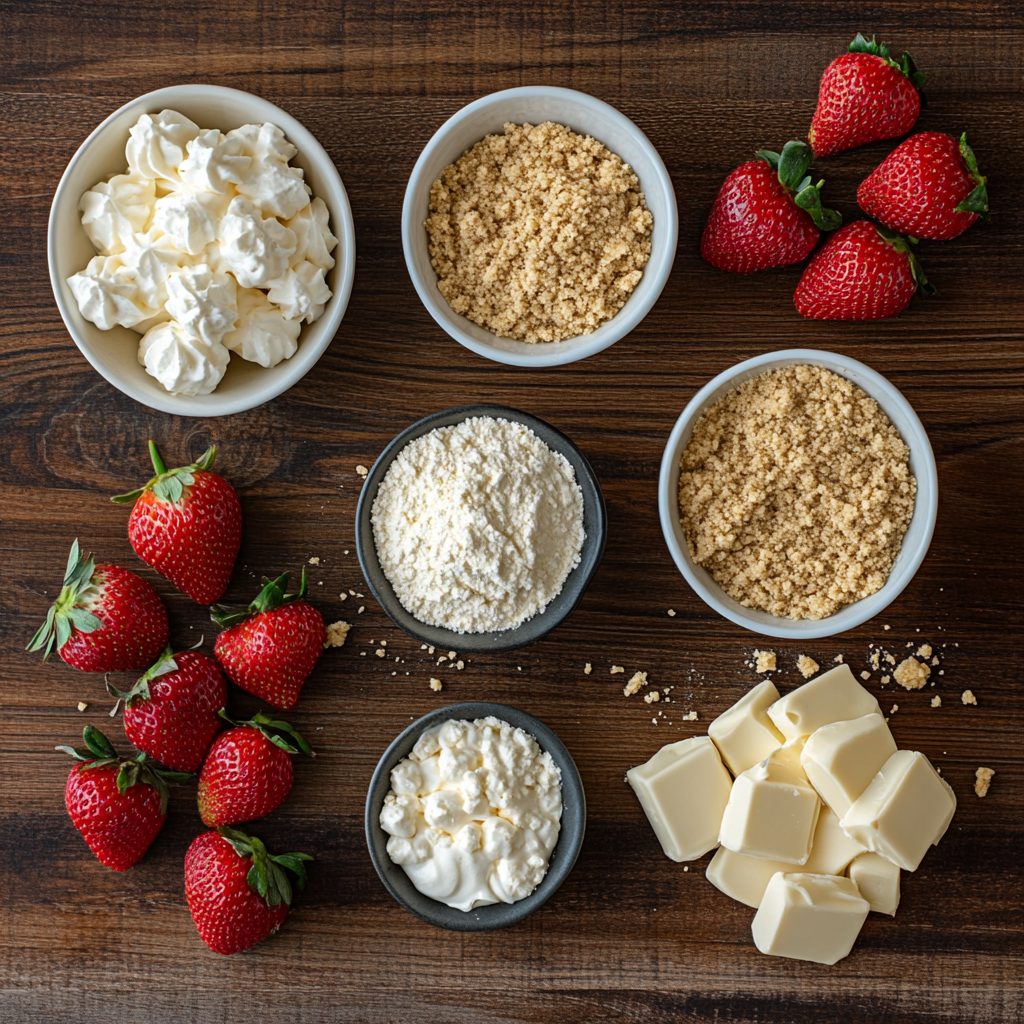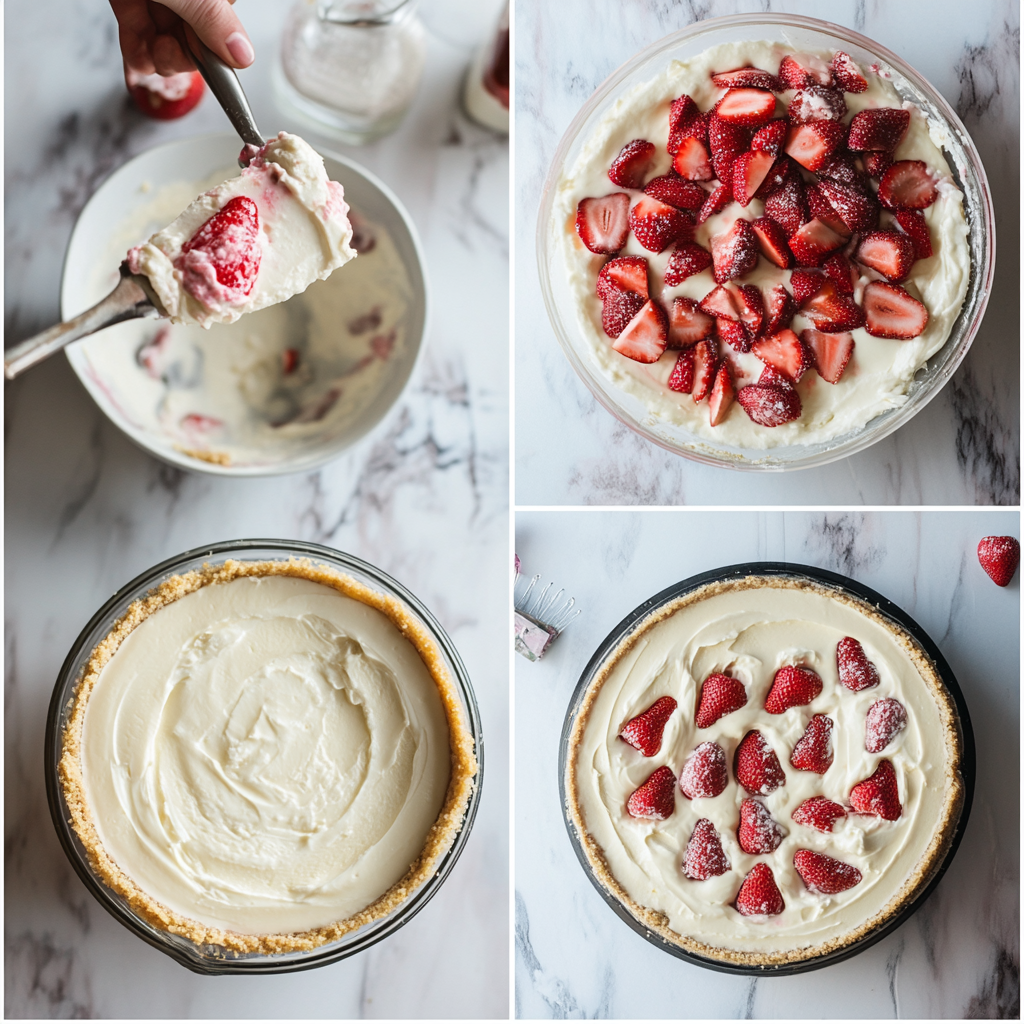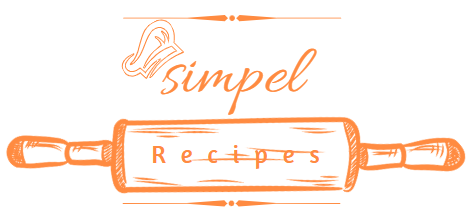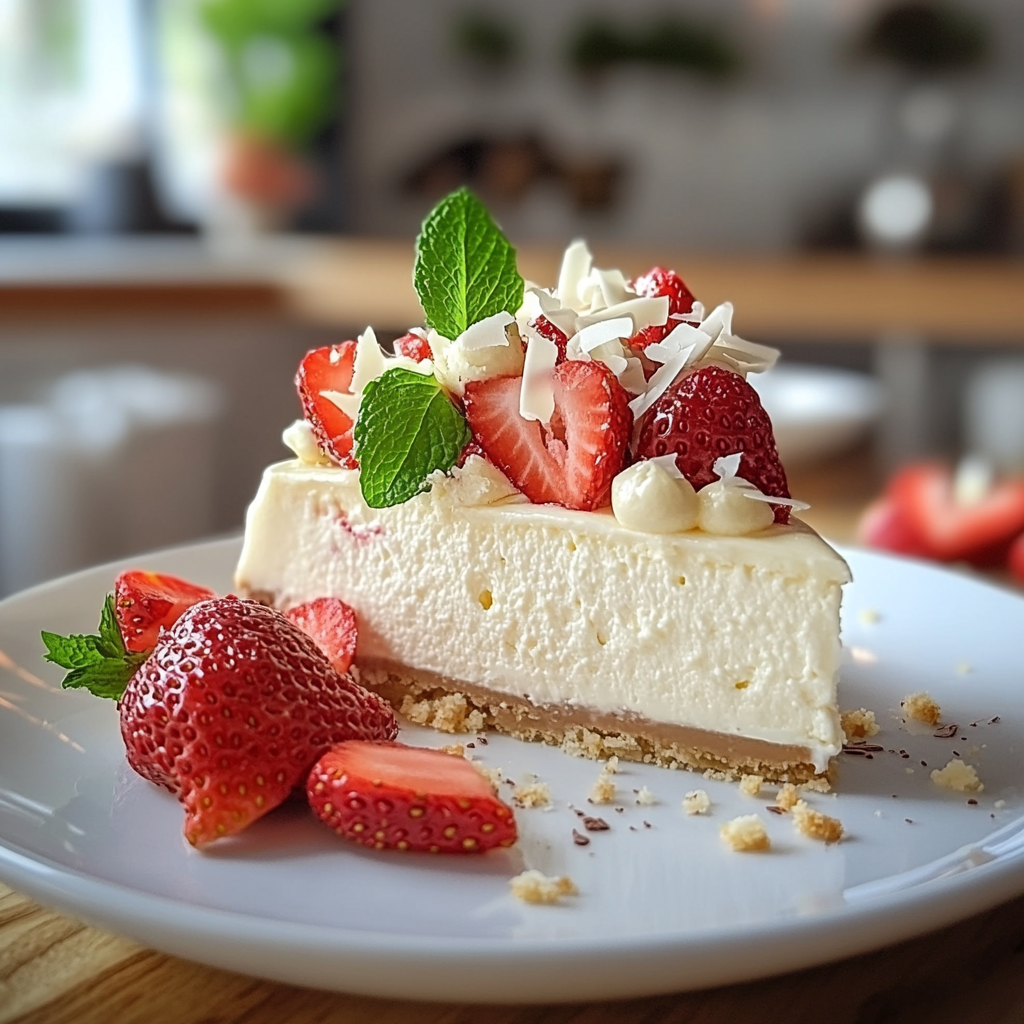Creating a White Chocolate Strawberry Cheesecake Snickers is not just about baking; it’s an art form that combines flavors, textures, and visual appeal. This guide will explore every facet of this delicious dessert, ensuring you can master it and impress anyone who tastes it.
Part 1: Ingredients and Preparation1.1 Ingredients
To create this delicious White Chocolate Strawberry Cheesecake, you will need the following ingredients:
For the Crust:
- 1 ½ cups graham cracker crumbs
- ½ cup unsalted butter, melted
- ¼ cup granulated sugar
For the Filling:
- 16 oz cream cheese, softened (room temperature for best results)
- 1 cup white chocolate, melted (use high-quality white chocolate for better flavor)
- ½ cup granulated sugar
- 3 large eggs (room temperature)
- 1 tsp vanilla extract
- 1 cup fresh strawberries, pureed (plus extra for garnish)
For the Topping:
- 1 cup heavy whipping cream
- 2 tbsp powdered sugar
- Fresh strawberries for garnish
- White chocolate shavings for garnish
1.2 Preparation Steps
Preheat the Oven: Preheat your oven to 325°F (160°C) to prepare for baking the white chocolate strawberry cheesecake.
Make the Crust:
- In a bowl, combine graham cracker crumbs, melted butter, and sugar.
- Press the mixture firmly into the bottom of a 9-inch springform pan.
- Bake for 10 minutes, then remove and let cool.
Prepare the Filling:
- In a large mixing bowl, beat the softened cream cheese until smooth.
- Gradually add the melted white chocolate, mixing until well combined.
- Add sugar, eggs, and vanilla extract, mixing until smooth.
- Fold in the strawberry puree gently, ensuring not to overmix.
Bake the Cheesecake:
- Pour the filling over the cooled crust.
- Bake for 50-60 minutes, or until the center is set but still slightly jiggly.
- Turn off the oven and let the cheesecake cool in the oven with the door ajar for 1 hour.
Chill: Refrigerate the cheesecake for at least 4 hours, preferably overnight, before serving. This step ensures that your white chocolate strawberry cheesecake sets perfectly.

Part 2: Tips for Perfecting Your Cheesecake2.1 Baking Tips
Room Temperature Ingredients: For the best results when making your white chocolate strawberry cheesecake, make sure all ingredients, especially cream cheese and eggs, are at room temperature. This ensures a smoother batter and helps the ingredients combine evenly, creating a creamy, lump-free texture.
Water Bath: For an ultra-creamy texture and to prevent cracking, consider baking your cheesecake in a water bath. Wrap the springform pan tightly in aluminum foil to prevent water from seeping in, and place it in a larger pan filled with water. This method ensures even baking and maintains a moist environment for the cheesecake to cook evenly.
Avoid Overmixing: When preparing the batter, mix just until the ingredients are combined. Overmixing can incorporate too much air into the batter, which may lead to cracks in the cheesecake as it bakes. A gentle mixing process is key to achieving that smooth, flawless finish.
2.2 Cooling Tips
Gradual Cooling: Once the cheesecake is done baking, it’s important to let it cool gradually. Allow it to cool in the oven with the door slightly ajar for about 1 hour to avoid sudden temperature changes, which can cause the cheesecake to crack. This slow cooling process helps maintain its perfect texture.
Covering: After the cheesecake has cooled, cover it with plastic wrap before refrigerating. This prevents the cheesecake from absorbing any unwanted odors from the fridge and ensures it remains fresh. Let it chill in the refrigerator for at least 4 hours (overnight is even better) to allow the flavors to fully meld and the texture to set perfectly.
Part 3: Flavor Variations3.1 Adding Flavors
Chocolate Swirl: For a decadent twist, swirl in some melted dark chocolate into the cheesecake filling before baking. This will create a beautiful marbled effect, adding both flavor and a visually stunning finish to your white chocolate strawberry cheesecake.
Citrus Zest: For a refreshing, tangy kick, add lemon or orange zest to the filling. The citrus zest will elevate the flavors of the cheesecake, balancing the sweetness with a bright and aromatic note that complements the richness of the white chocolate.
Nutty Flavor: To introduce an extra layer of texture and flavor, mix in crushed nuts like almonds or hazelnuts into the filling. These nuts add a delightful crunch that contrasts with the creamy filling, providing a perfect balance of textures in every bite.
3.2 Fruit Variations
Berry Medley: Create a vibrant and colorful filling by using a mix of berries for the puree, such as raspberries, blueberries, or blackberries. This not only adds a burst of flavor but also gives your cheesecake a more complex, fruity taste profile, enhancing the freshness of the dessert.
Tropical Twist: For an exotic touch, incorporate tropical fruits like mango or pineapple into the filling. These fruits bring a unique, sweet, and tangy flavor profile that will give your cheesecake a tropical flair, making it an exciting treat for your taste buds.
Part 4: Serving and Presentation Ideas for White Chocolate Strawberry Cheesecake Snickers 4.1 Elegant Serving Suggestions
Plating: For an elegant presentation, serve the cheesecake on a large, white plate. The simplicity of the white plate creates a clean canvas that allows the vibrant colors of the cheesecake and garnishes to truly stand out, making the dessert the focal point of the table.
Garnishes:
Sauce Drizzle: For an extra level of sophistication, drizzle melted white chocolate or a vibrant berry coulis across the plate. The smooth chocolate or tangy berry sauce creates an elegant contrast with the cheesecake, enhancing both the flavor and visual appeal of the dessert.
Fresh Berries: Scatter fresh strawberries, raspberries, or other colorful berries around the plate. The bright colors not only add visual appeal but also bring a burst of freshness that complements the richness of the cheesecake.
Mint Leaves: A sprig of fresh mint placed strategically on the plate adds a refreshing touch that contrasts beautifully with the creamy texture of the cheesecake. The green hue enhances the overall aesthetic and provides a fragrant accent to the dish.

4.2 Individual Portions
- Mini Cheesecakes: For a charming and personalized presentation, serve individual mini cheesecakes in small jars, cups, or mason jars. This allows guests to enjoy their own serving while also adding a rustic and adorable touch to the dessert spread. It’s perfect for parties or gatherings where portion control and visual appeal are key.
- Cheesecake Bars: If you’re looking for an easy-to-serve option, cut the cheesecake into bars and place them on a platter. Garnish each bar with a dollop of whipped cream and a fresh strawberry slice for a simple yet elegant finish. Cheesecake bars are ideal for buffets or casual gatherings, offering a no-fuss yet delicious way to serve dessert.
4.3 Themed Presentations
- Seasonal Themes: Tailor your cheesecake presentation to the season. For spring or summer, decorate the plate with vibrant edible flowers or fresh fruit like berries. In contrast, for fall or winter, enhance the cheesecake with warm, comforting spices like cinnamon or nutmeg. Seasonal themes not only add personality to the dessert but also connect it to the time of year.
- Celebration Themes: Celebrate special occasions with themed decorations. For birthdays, consider adding chocolate shavings or sprinkles on top of the cheesecake, while for holidays like Christmas or New Year, you can incorporate festive colors like red, green, or gold. These thoughtful touches help create a festive atmosphere that ties the dessert to the celebration.
4.4 Accompaniments
- Beverage Pairings: Enhance the dessert experience by pairing the cheesecake with complementary beverages. A glass of dessert wine, such as a sweet Riesling or Moscato, can balance the richness of the cheesecake, while a cup of strong, freshly brewed coffee offers a contrast to the sweetness. Both drinks elevate the flavors and make for a delightful pairing.
- Side Dishes: For those who enjoy extra indulgence, serve the cheesecake with a side of whipped cream or a scoop of vanilla ice cream. The cold creaminess of the ice cream or the light fluffiness of whipped cream adds an extra layer of texture and richness, turning the cheesecake into a truly decadent treat.
Part 5: Storage and Leftover Tips for White Chocolate Strawberry Cheesecake Snickers
5.1 Storing the Cheesecake
- Refrigeration: To keep your cheesecake fresh, store it in the refrigerator, loosely covered with plastic wrap or in an airtight container. It will stay good for up to 5 days. Make sure it’s kept in a cool, consistent environment to maintain its texture and flavor.
- Freezing: If you need to store the cheesecake for a longer period, freezing is a great option. Wrap it tightly in plastic wrap to prevent freezer burn, and place it in an airtight container or freezer-safe bag. The cheesecake can be frozen for up to 2-3 months without compromising its quality. Just be sure to label it with the date to keep track of its storage time.
5.2 Thawing the Cheesecake
- Refrigerator Method: When ready to enjoy the cheesecake, the best way to thaw it is by placing it in the refrigerator overnight. This ensures the cheesecake thaws slowly and evenly, preserving its texture and flavor.
- Quick Thawing: If you’re in a hurry, you can thaw the cheesecake more quickly by leaving it at room temperature for 2-3 hours. While this method is faster, it may slightly affect the texture, so the refrigerator method is preferred for optimal results.
5.3 Handling Leftovers
- Slice and Store: If you have leftover cheesecake, it’s helpful to slice it into individual pieces before storing it. This allows for easier access when you want a small portion and makes it more convenient for future enjoyment. If you’re planning to freeze leftovers, consider wrapping each slice individually and labeling them with the date to ensure easy identification and storage.
5.4 Using Leftovers Creatively
- Cheesecake Parfaits: For a creative twist, crumble leftover cheesecake and layer it with yogurt, fresh fruit, and granola. This makes for a delightful parfait that combines the richness of cheesecake with fresh and crunchy textures, perfect for breakfast or a fun dessert.
- Cheesecake Milkshake: Turn your leftover cheesecake into a decadent milkshake! Blend pieces of cheesecake with milk and a scoop of ice cream to create a creamy, indulgent treat that’s perfect for any occasion.
- Cheesecake Pops: For a fun and portable dessert, dip small bites of leftover cheesecake in melted chocolate, then freeze them on sticks for cheesecake pops. This is a great way to enjoy your cheesecake in a bite-sized, easy-to-eat format, and it adds a delightful chocolate coating for extra flavor.
Part 6: Troubleshooting Common Cheesecake IssuesPart 6: Troubleshooting Common Cheesecake Issues
6.1 Cracking
Why It Happens: Cracks in your cheesecake can be frustrating and are usually caused by rapid temperature changes or overmixing the batter. When the cheesecake bakes, the center cooks more slowly than the edges, which can cause it to crack if there’s an uneven temperature. Overmixing can also incorporate too much air into the batter, which causes the cake to puff up during baking and then crack as it cools.
Prevention Tips:
- Use a water bath: A water bath helps maintain an even cooking temperature, ensuring that the cheesecake cooks slowly and evenly. The moisture in the oven prevents the surface from drying out and cracking.
- Avoid overmixing: When preparing your batter, mix just until the ingredients are combined. This minimizes the formation of air bubbles and reduces the risk of cracks. Use a gentle hand when mixing to keep the texture smooth and stable.
- Gradual cooling: After the cheesecake finishes baking, let it cool gradually. Avoid sudden changes in temperature, like removing it straight from the oven and placing it in a cool environment, as this can cause it to crack. Let it cool in the oven with the door ajar for about an hour before transferring it to room temperature.
6.2 Texture Problems
Grainy Texture: A grainy texture can be a result of the cream cheese not being softened properly before mixing. Cold cream cheese can cause lumps, which may affect the smoothness of the final product. Additionally, overmixing the batter can break down the smooth texture, creating an undesirable consistency.
Prevention Tips:
- Ensure cream cheese is at room temperature: Always take your cream cheese out of the fridge well in advance to let it soften. Softened cream cheese blends much more smoothly into the batter, preventing lumps and creating a creamy texture.
- Beat until smooth before adding other ingredients: Beat the softened cream cheese by itself until it is completely smooth and free of lumps before adding other ingredients like sugar, eggs, and vanilla. This step is essential for achieving a smooth and velvety texture in your cheesecake.
6.3 Overbaking
Signs: Overbaking is one of the most common issues when making cheesecake. An overbaked cheesecake tends to be dry and may develop cracks around the edges or even throughout the center. Overbaking can also cause the texture to become dense and unpleasantly firm.
Prevention Tips:
Avoid opening the oven door: Every time you open the oven door, the temperature inside drops, which can lead to uneven baking. Only open the door near the end of the baking time to check for doneness, and avoid checking too early in the process.
Check for doneness: One of the best ways to check if your cheesecake is perfectly baked is by gently shaking the pan. The edges should be set, but the center should still have a slight jiggle. If it shakes too much, it needs more time, but if it’s completely firm, it’s likely overbaked.
Use an oven thermometer: Ovens can often have temperature variations, so it’s always a good idea to use an oven thermometer to ensure the baking temperature is accurate. This helps prevent overheating and ensures your cheesecake bakes at the ideal temperature.
Part 7: Healthier Alternatives
7.1 Lower-Calorie Options
- Greek Yogurt: Substitute some of the cream cheese with Greek yogurt for a lighter version.
- Reduced Sugar: Use a sugar substitute or reduce the amount of sugar in the recipe.
7.2 Gluten-Free Options
- Gluten-Free Crust: Use gluten-free graham crackers or almond flour for the crust.
- Ingredient Check: Ensure all ingredients are certified gluten-free.
7.3 Vegan Options
- Vegan Cream Cheese: Substitute cream cheese with a vegan alternative.
- Aquafaba: Use aquafaba (chickpea water) as an egg replacement for a plant-based option.
Part 8: Cultural Significance of Cheesecake
8.1 Historical Background
Cheesecake has a rich history that dates back to ancient Greece, where it was served to athletes during the first Olympic Games in 776 B.C. The Romans later adapted the recipe, and it spread across Europe, evolving into various forms.
8.2 Regional Variations
- New York Style: Known for its dense, creamy texture, made primarily with cream cheese.
- Italian Ricotta Cheesecake: Lighter and fluffier, made with ricotta cheese instead of cream cheese.
- Japanese Cotton Cheesecake: Known for its light, airy texture, often steamed rather than baked.
8.3 Modern Popularity
Today, cheesecake is a beloved dessert worldwide, with countless variations reflecting local ingredients and culinary traditions. The fusion of flavors, such as the combination of white chocolate and strawberries, showcases the dessert’s versatility and appeal.
Part 9: Flavor Profiles and Pairings
9.1 Understanding Flavor Profiles
- Sweetness: The white chocolate adds a creamy sweetness, while the strawberries provide a tart contrast.
- Creaminess: The cream cheese creates a rich, smooth texture that balances the sweetness.
- Acidity: The strawberries introduce a refreshing acidity that cuts through the richness of the cheesecake.
9.2 Pairing Recommendations
- Wine Pairings: Light dessert wines, such as Moscato or Riesling, complement the sweetness of the cheesecake.
- Coffee Pairings: A rich espresso or cappuccino enhances the flavors without overwhelming them.
- Herbal Teas: Floral teas, like chamomile or jasmine, can provide a soothing contrast.
Part 10: Advanced Techniques for Cheesecake Mastery
10.1 Flavor Infusions
- Herb-Infused Cream: Infuse heavy cream with herbs like basil or mint before whipping for a unique flavor.
- Spice Infusion: Add spices like cinnamon or nutmeg to the crust for added depth.
10.2 Advanced Presentation Techniques
- Layered Cheesecake: Create a layered cheesecake with different flavors, such as chocolate and vanilla.
- Deconstructed Cheesecake: Serve components separately—cheesecake bites, sauce, and fruits for an artistic presentation.
10.3 Experimenting with Textures
- Crunchy Toppings: Add a layer of crushed cookies or nuts on top for added crunch.
- Gelée Layer: Consider adding a layer of strawberry gelée for a fresh burst of flavor.
Conclusion
With this comprehensive guide, you now have all the tools you need to create a stunning White Chocolate Strawberry Cheesecake Snickers. From preparation and baking to serving and storing, every step is covered to ensure your cheesecake is a hit at any gathering. Embrace the art of cheesecake-making, explore the variations, and enjoy the delightful experience of sharing this exquisite dessert with others!
This expanded version includes sections on cultural significance, flavor profiles, advanced techniques, and more, providing a richer reading experience. Let me know if you need further adjustments or additional content!

